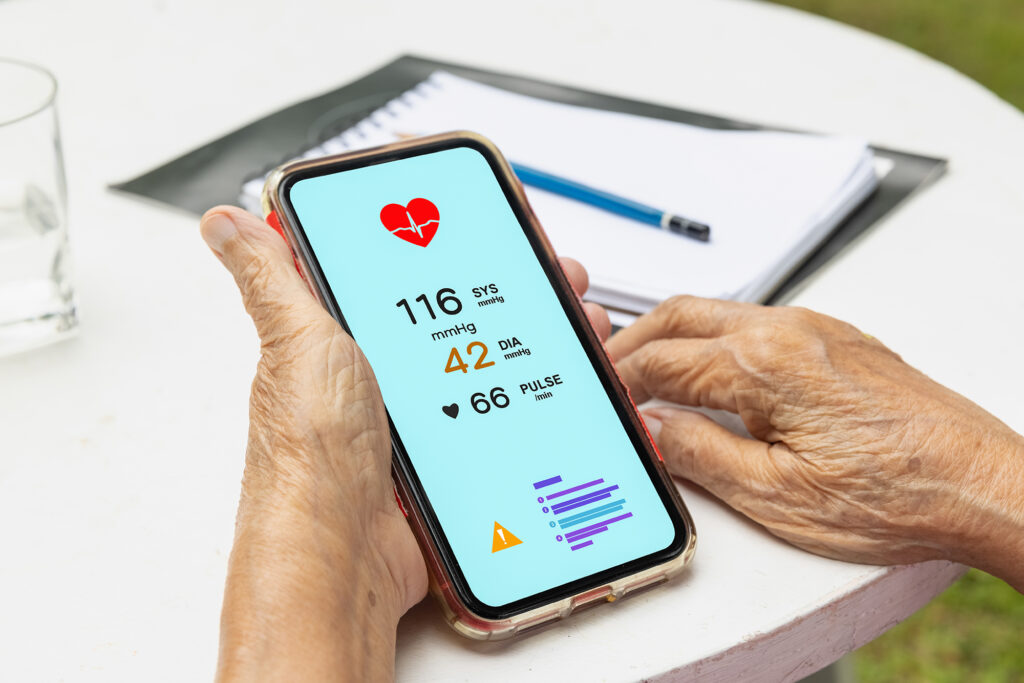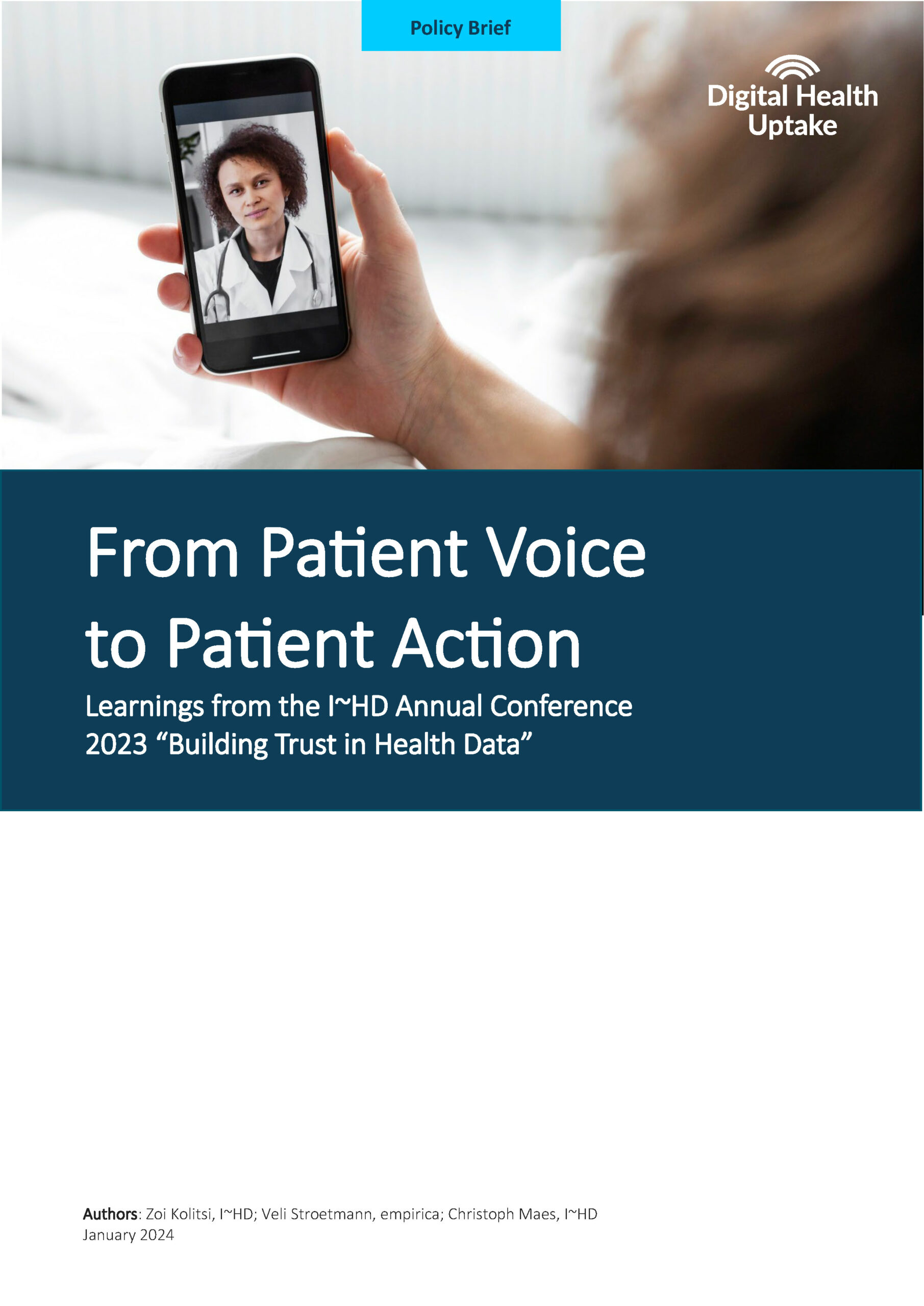Citizens and patients are bringing a fresh potency to the demand for more interoperable and better data quality. They are increasingly playing a key role as agents of data sharing culture change as well as active citizens in the shaping of digital health policies and rethinking health system design for true patient value. Health systems, healthcare providers and payers should not wait for the next health crisis to embrace a patient-focused and patient-engaging digital transformation of health and care. The emerging role of patients, with system thinking skills, as consultants and collaborators, is key to improving the understanding of patient perspectives and guiding the design of Digital Health solutions and services. “One patient one record” is at the heart of safe, patient-centred care. We can learn from (such) successful practices and adapt them to our local particularities.
There is an untapped potential from patients as agents of health data value generation across the continuum of data capture all the way to data curation and quality improvement of their personal health data. There is also a great interest among citizens and patients to make better use of their own health data, which is partially data from Electronic Health Records (EHRs) and partially their own generated health data (patient reported outcomes, medical device data, etc). There is, furthermore, a recognition that such kind of patient engagement will improve the quality of their care and will simultaneously create conditions for reusability of quality data for research.
This trend marks a shift from privacy protection to citizen safety in the provision of data driven care and from the citizen / patient being a data subject to becoming a key change agent in the transformation of health and care. This is well reflected in the European Health Data Space (EHDS) Regulation proposal, creating the grounds for interoperability requirements of EHRs and systems exchanging data.
It supports the paradigm shift from a physician-enabled health data exchange based on patient consent to direct patient sharing of own data enabled by services such as national and the EU health wallets. At the same time, value-based care leveraging on patient reported outcomes is gaining traction and importance.
Transitioning from vision to reality benefits from learnings and experiences that have shown to work. This approach has also been pursued through the Digital Health Uptake (DHU) Catalyst session organised within the I~HD Annual Conference 2023 “Building Trust in Health Data” in Ghent, Belgium (Karlien Hollanders, Belgian Federal Public Service Public Health; Birgit Morlion Vrije Universiteit Brussel Faculty of Medicine and Pharmacy; Petra Hoogendoorn, Leiden University Medical Centre; Hein Raat, Erasmus Medical Center Rotterdam Department of Public Health; Valentina Strammiello, European Patients’ Forum; Beñat Zubeltzu Sese, Osakidetza; Jan Vekemans, 1patient1record4Belgium; Carlos Altuna Faus, European Heart Network; Dr. Tanja Stamm, Centre for Medical Data Science, Medical University of Vienna and Ludwig Boltzmann Institute for Arthritis and Rehabilitation, Vienna, Austria). We have explored what digital health brings to patients today in terms of innovation and value, and what are the game changers placing the patient in charge of own health prevention, healthcare and treatment. The recommendations and calls to action for health systems and healthcare providers are the outcome of a discussion on current successful practices providing trust in the digital health ecosystem. Procurers and payers should stimulate the move from innovation to adoption through incentives, risk sharing and award models.
Prioritising health maintenance calls for a focus on prevention and incentivisation of healthy living, supported by digital tools. The importance of having the full medical history of the patient available in one point cannot be overemphasised. Healthcare providers should be motivated and rewarded to share relevant health data. This comprehensive and complete medical record is a prerequisite for patient-centric, high quality care. Incentives should also be in place for healthcare providers to adopt and effectively utilize digital health solutions, promoting their integration into routine care practices for improved collaboration with patients. There is an opportunity to leverage on existing and emerging (enabling) solutions and technologies to support patient lead communities of doers and other co-creation initiatives.


A new culture of care supported by digital tools has emerged, marking the move from a ‘treatment first approach’ to engaging the patient / citizen as a co-pilot of his / her health, supported by the necessary empowerment tools.
Take ‘care’ of the patient; do not just treat the disease! Shared decision making is not presenting the patient a list of possible medical options; patient and health professional should decide together based on theoretical outcomes, balanced between quality of life and intensity of treatment, expertise, and patient’s life goals.
Actively interacting with patients and maintaining human contact (speaking the language of the patient) is very important. To this end, healthcare providers should be made aware of the importance of patient education, especially on how digital health tools can empower them to actively participate in their care. An important enabler for engaging patients in the co-creation and co-design of digital health solutions is health and digital health literacy. Hence, the importance of promoting digital literacy programs for patients, ensuring they are well-equipped to use and benefit from digital health solutions effectively, cannot be overemphasized. At the same time, there is a requirement that solutions designed for patient engagement are optimized for efficiency, including through automation of processes that do not necessarily require human intervention. Before implementing a digital application, it is important to first check what the benefits are for both healthcare providers and patients. These should be sufficiently large for both parties, otherwise implementation will not be successful.
A continuous focus on prioritizing interoperability should be maintained to facilitate seamless integration with other health technologies and systems, promoting a holistic approach to patient care. Integration with existing EHR systems should be streamlined to avoid duplication of efforts and ensure a unified and comprehensive view of patient information. Robust security measures need to be put in place to safeguard patient data, and privacy features should be clearly communicated to build and maintain trust among users. EU legislation and standards should maximise harmonisation of common denominators, leaving room for justified national ‘deviations’ to adapt to the specificities of the national healthcare systems.
Health and Wellness Apps put knowledge and information in patients’ and citizens’ hands. National health authorities individually and collectively, through EU level action, should treat health Apps as infrastructure and ensure equitable access to trusted health Apps. This calls for the fragmented landscape of patient-facing apps and sensors to be driven strongly to become more interoperable with EHR data, so that these can be combined and used as a collective rich data resource by all.
Beyond interoperability, ensuring the quality, safety, and reliability of health Apps is necessary. In an open EU market and an extended international proliferation of health Apps, patients and physicians need a basis for making informed choices. The TS 82304-2 international standard and its associated trust framework enables a quality labelling of Apps that is recognised across the EU and beyond. By embracing trusted standards-based quality labelling of Apps, we will support patients’ and citizens’ ability to make quality based, informed choices as well as physicians’ decisions in their prescribing of quality digital health Apps.

Recommendations
- Recognise the increasingly important role of Patient Consultants, with system thinking, in improving the understanding of patient perspectives and guiding the design of Digital Health solutions and services;
- Leverage on existing and emerging enabling solutions and technologies to support patient lead communities of doers and initiatives;
- Optimise efficiency of patient engagement by giving recognition and support to patient organisations in combination and by incorporating Patient Experts in decision making;
- Support patients’ informed decision making in choosing digital health services, both through improving population health and digital health literacy and quality labelling of patient-facing digital health solutions.
DISCLAIMER
Views and opinions expressed are those of the author(s) only and do not necessarily reflect those of DG CONNECT, European Commission. Neither the European Union nor the granting authority can be held responsible for them.
